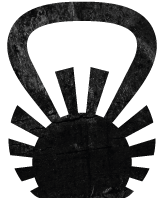How Often Should CrossFitters Train for Optimal Results? By Coach JKH
CrossFit is well known for its high intensity workouts. Achieving optimal results requires balancing intensity with adequate recovery. Here’s a guide for beginners, intermediate athletes, and advanced athletes, with considerations for age and recovery optimization.
Beginners (0-6 Months)
For beginners, the primary focus should be on learning proper technique and building a solid fitness foundation. Three to four workouts per week is ideal. This frequency allows sufficient time to adapt to the new stress on the body while preventing overtraining and reducing the risk of injury. Rest days are crucial; they allow muscles to recover and grow, and the nervous system to adapt. Beginners should also incorporate mobility and flexibility work to enhance their movement patterns and prevent injuries.
Intermediate Athletes (6 Months - 2 Years)
Intermediate CrossFitters typically have a good grasp of basic movements and can handle more volume and intensity. Four to five workouts per week is generally recommended. This level of frequency helps to continue building strength and conditioning without overwhelming the body. Adding one or two active recovery days, such as light yoga, swimming, or walking, can aid in maintaining flexibility and promoting muscle recovery.
Advanced Athletes (2+ Years)
Advanced athletes have the experience and capacity to handle more intense training. Five to six workouts per week can be optimal, with a mix of high-intensity WODs (Workouts of the Day) and strength training sessions. However, advanced athletes should be vigilant about their recovery strategies, including proper nutrition, sleep, and possibly incorporating techniques like foam rolling or professional massages. Listening to the body is crucial; any signs of overtraining such as persistent soreness, fatigue, or decreased performance should be taken seriously.
Age Considerations
- Under 30: Younger athletes generally recover faster and can handle more frequent high-intensity training. However, they should still prioritize rest and recovery to avoid burnout.
- 30-50: As athletes age, recovery times can lengthen. Four to five training sessions per week with a strong emphasis on recovery practices can be beneficial.
- 50+: Older athletes might benefit from three to four workouts per week, with more active recovery days. This approach helps to maintain fitness levels while mitigating the risk of injuries.
Optimizing Recovery
Regardless of age or experience level, optimizing recovery is essential for long-term progress. Key recovery strategies include:
- Nutrition: Consuming a balanced diet rich in proteins, healthy fats, and carbohydrates to fuel workouts and repair muscles.
- Hydration: Ensuring adequate fluid intake to support overall bodily functions.
- Sleep: Prioritizing quality sleep to facilitate muscle repair and mental recovery.
- Active Recovery: Incorporating low-intensity activities to keep the body moving without adding stress.
The frequency of CrossFit training should be tailored to the individual’s experience level, age, and recovery capacity. By listening to the body and implementing proper recovery strategies, CrossFitters can maximize their performance and enjoy sustainable progress in their fitness journey.
Coach JKH CrossFit Rising Sun East Nashville.

